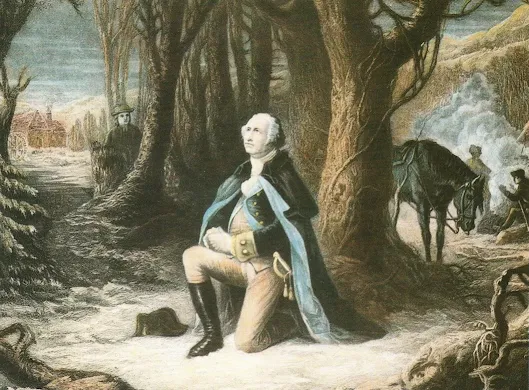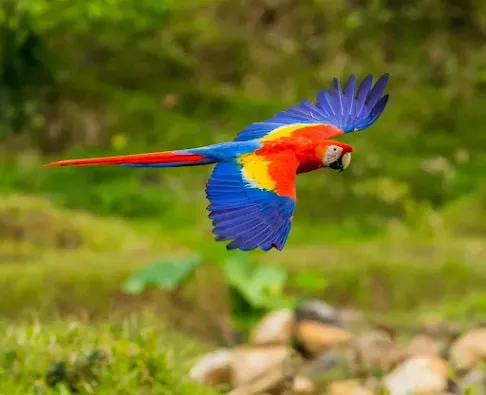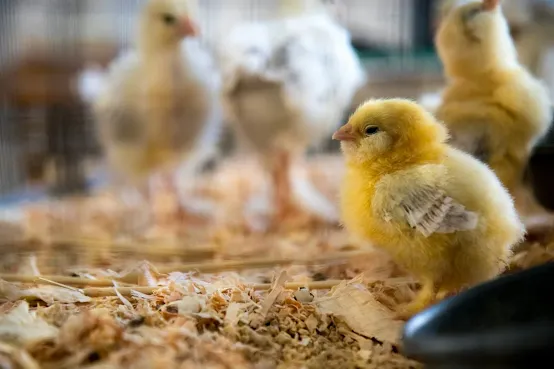George Washington's Domestic Pets and Farm Animals
A Glimpse into the President's Animal Companions
George Washington is admired by Americans as a paternal figure due to his exceptional leadership during challenging periods and his strong vision for the future of the United States. An aspect of the first President's life that is not widely discussed is his deep love for animals. Throughout his life, Washington was always surrounded by delightful creatures from the natural world. |
| During the times of the American Revolution, George Washington was accompanied by his loyal horse, Nelson |
Although Washington had busy government duties, he still managed to make time to be with the animals. This article will focus on the specific information about the animals and pets that interacted with the first president of the United States.
Throughout the challenging winter at Valley Forge, Washington would ride Nelson daily, frequently through thick snow, in order to motivate his soldiers. Washington's willingness to experience hardships alongside his soldiers positively influenced their spirits and morale during the challenging times of the American Revolution. During the Battle of Princeton, Washington charged into the center of the fight on horseback, riding Nelson.
Horses
George Washington had a strong fascination with horses and took pleasure in riding them frequently. George Washington's love for horses was clear from a young age, as he honed his horseback riding skills on the rolling hills of Virginia. During his lifetime, Washington kept a collection of excellent horses. Nelson, the cherished horse of George Washington, had a significant impact on both his personal and military affairs. Nelson was believed to be a mix of Thoroughbred and Arabian horses and known for his stamina, loyalty, and power. |
| Horses were a common sight at Mount Vernon, where they roamed freely, grazing on the green pastures of Virginia soil |
A bullet from a musket passed through Washington's coat and narrowly missed hitting him. This anecdote achieved legendary status, as many attributed Nelson's quickness and nimbleness to rescuing Washington's life.
After many more acts of bravery, Nelson retired to Mount Vernon at the end of the Revolutionary War. In Virginia's lush fields, he spent his retirement eating grass, frolicking energetically at dawn and dusk, his fur taking on almost a golden hue on those occasions.
In 1790, Washington was greatly impacted by Nelson's death at 27 years old. He noted in his journal that Nelson had always been a source of support during his life's ups and downs, and he had a grave marker placed at Mount Vernon to commemorate their unique connection. Nelson's dedication and courage made him a symbol of America's unwavering spirit during the Revolutionary War.
Dogs
Washington's dogs are an essential part of his life and cannot be overlooked. Washington adored dogs and owned a mix of breeds, such as foxhounds, terriers, and greyhounds. These loyal dogs freely moving around the extensive estate at Mount Vernon greatly enhanced the daily life of the first President. The foxhounds, sleek and agile, were easily distinguishable from the rest.The Washington pack had different breeds, each appreciated for its unique traits. Terriers hunted pests on the property, while powerful mastiffs, such as Vulcan, guarded the estate. The main objective of foxhounds was to pursue prey. These loyal dogs left a lasting impression on Mount Vernon's history while enriching the first President's life.
Parrots
Within the corridors of Mount Vernon, visitors may stumble upon a pleasant surprise - George Washington's talkative parrot. During banquets, this vibrant bird captivated guests with its quick thinking and ability to imitate sounds. Obtained through attentive watching and engagement, it possessed a collection of sounds and phrases that varied from beautiful tunes to entertaining bits of talk.Livestock of Mount Vernon
Mount Vernon's agricultural output benefited greatly from the numerous livestock. It is worth noting that Washington viewed himself primarily as a farmer before considering himself a politician, and he returned to farming after his presidency ended. Sheep fed on green fields of Mount Vernon, while cattle offered sustenance and materials. Pigs, goats, and chickens completed the rural scenery, illustrating Washington's commitment to self-reliance and eco-friendliness.The sheep produced wool, a sustainable supply of warmth and clothing. Professional shepherds carefully oversaw the grazing of animals on the lush meadows in Mount Vernon, with dogs standing guard. Each year, their wool was meticulously sheared and twisted into beautiful yarn for making textiles.
The utilization of Merino sheep wool helped advance early American agriculture. George Washington early recognized the significance of Merino wool and worked to introduce Merino sheep to the United States. Alongside Merino sheep, Southdown sheep, a traditional breed with a long history, could also be found on farms in America.
They were a popular choice due to their small size, high quality wool, and ability to withstand different weather conditions. Southdown sheep were well-liked in the United States from colonial times to the 1800s.
 |
| Various breeds of sheep roamed the green pastures of Mount Vernon, contributing to its idyllic scenery |
 |
| Goats were an integral part of every American farm during the 19th century, providing very tasty and healthy cheese |
George Washington bred Berkshire and Tamworth pigs at Mount Vernon, renowned for their high-quality meat and ability to thrive in forest environments. The Berkshire, first bred in England, is famous for its marbled meat and excellent flavor. The Tamworth, also called the Irish Grazer, is valued for its toughness and lean meat.
Pigs played a crucial role in the daily routine of farm life. These animals are fairly simple to take care of and can search for food in forests while also eating leftovers and excess crops from the fields. During the colonial era in America, pigs symbolized wealth and their existence on farms represented independence. Also, their waste, which is full of nutrients like nitrogen, phosphorus, and potassium, is a great natural fertilizer.
Pigs played a crucial role in the daily routine of farm life. These animals are fairly simple to take care of and can search for food in forests while also eating leftovers and excess crops from the fields. During the colonial era in America, pigs symbolized wealth and their existence on farms represented independence. Also, their waste, which is full of nutrients like nitrogen, phosphorus, and potassium, is a great natural fertilizer.
 |
| Due to the natural fertility of Virginia soils, as well as the progressive use of various types of manure, Mount Vernon Estate became highly profitable |
Animal Welfare in the White House
Washington's life was improved by animals, such as the horse that was with him in war and the loyal dogs that protected his estate. Thanks to them, we achieve a more profound comprehension of the individual hidden by the legend. George Washington's enduring legacy still inspires many generations of Americans, and his love for animals reflected his overall dedication to responsibility. His animals were not mere possessions; they were cherished friends who added value to his life in different ways.








Comments
Post a Comment